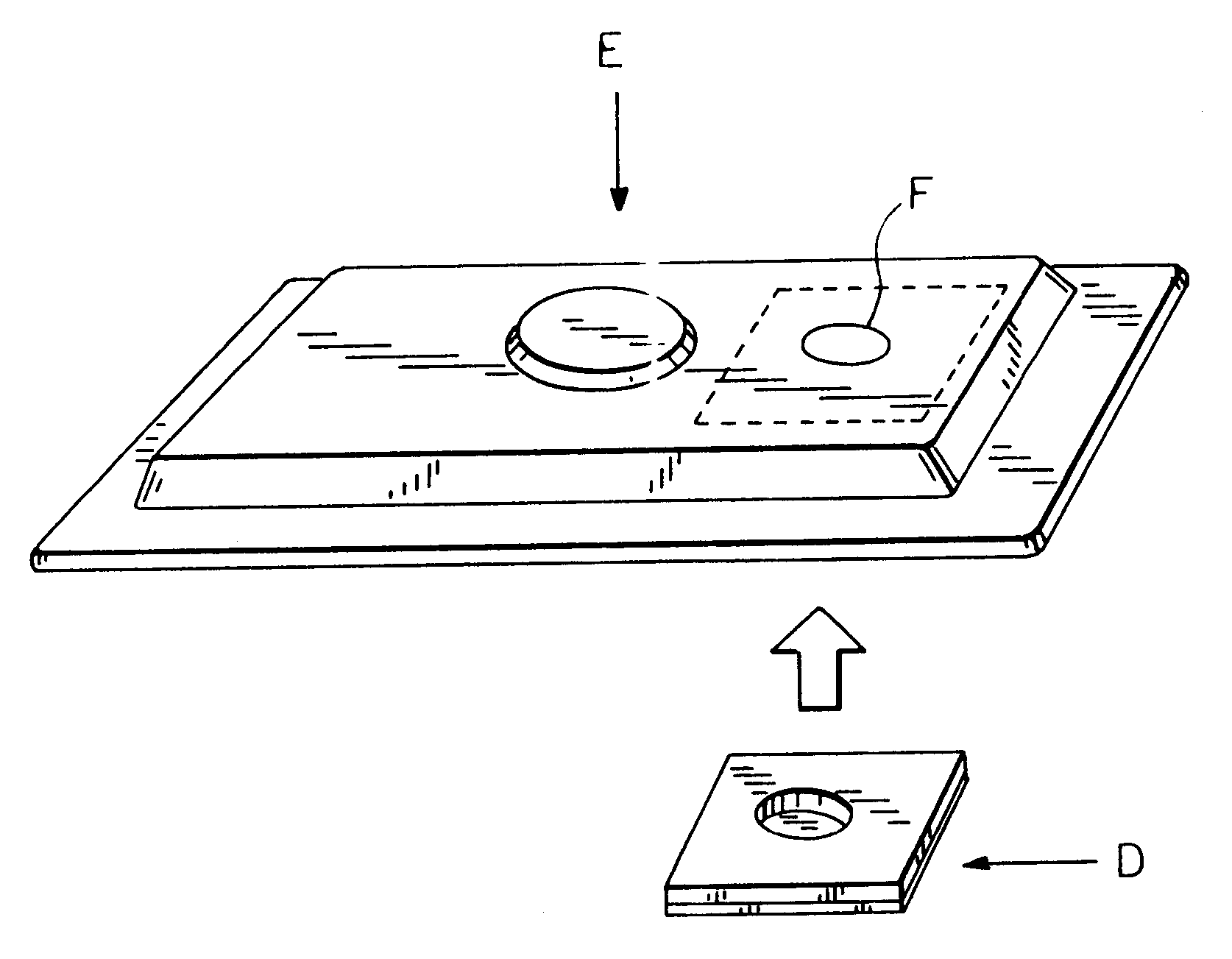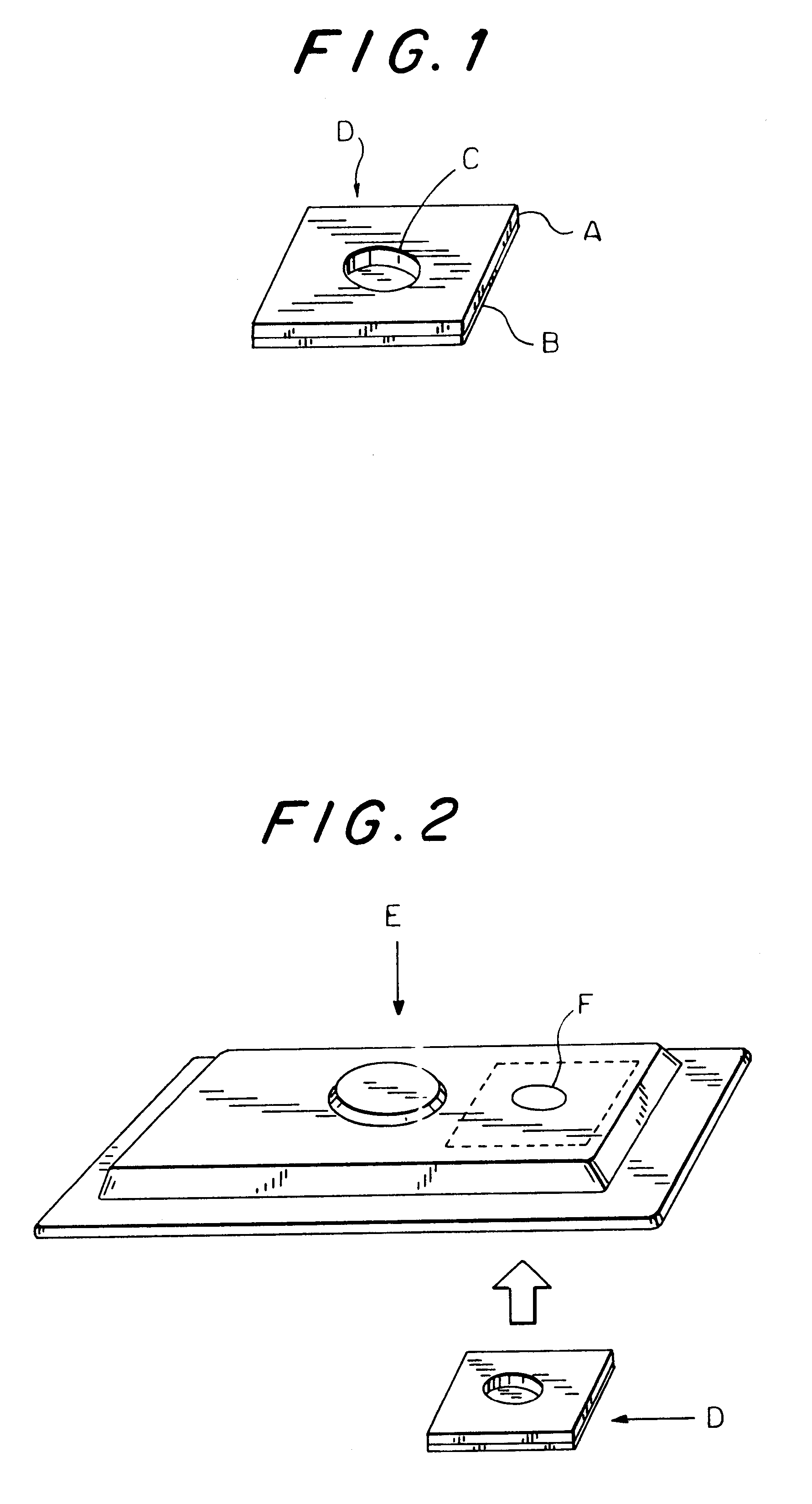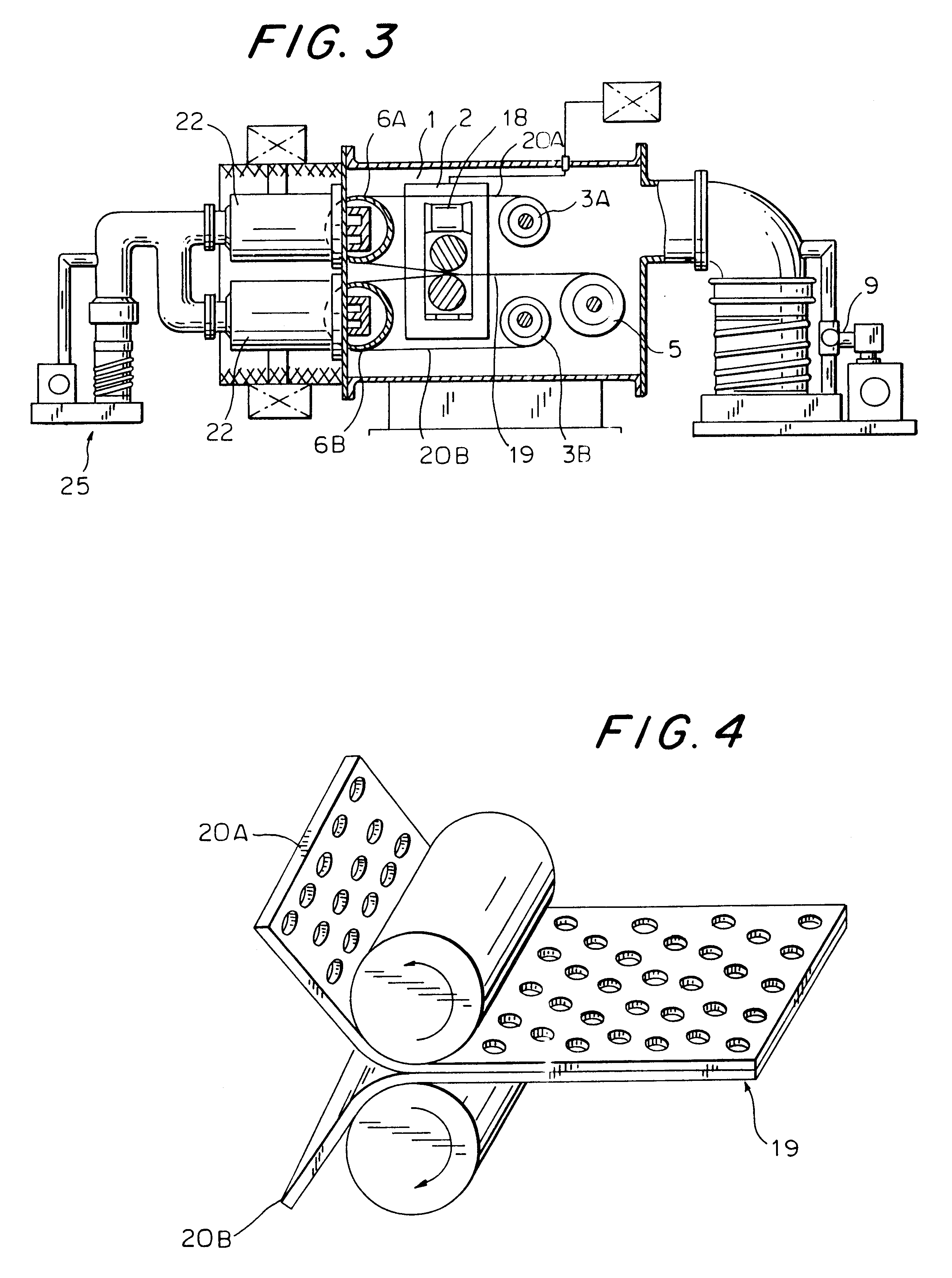Safety valve element for battery and battery case cap with safety valve
- Summary
- Abstract
- Description
- Claims
- Application Information
AI Technical Summary
Benefits of technology
Problems solved by technology
Method used
Image
Examples
example 2
A multiplicity of circular perforated openings having a diameter of 3 mm were formed on a stainless steel plate rolled by a cold rolling and having a thickness of 60 .mu.m in a lattice pattern by means of a punching press, wherein a pitch between openings was determined to be 10.5 mm. This perforated cold-rolled stainless steel plate and a nickel foil having a thickness of 10 .mu.m were inserted into a vacuum chamber of an argon gas atmosphere having a vacuum level of 1.times.10.sup.-2 Torr so as to provide an etching of approximately 500 angstrom on one surface of the cold-rolled and perforated stainless steel plate and an etching of approximately 500 angstrom on the corresponding one surface of the nickel foil by the magnetron sputtering method. Subsequently, the etched surfaces of the cold-rolled and perforated stainless steel plate and the nickel foil were laminated and both plate and foil were pressure welded by a cold rolling at a room temperature and with a rolling reduction ...
example 3
A multiplicity of circular perforated openings having a diameter of 3 mm were formed on the cold rolled steel plate having a thickness of 90 .mu.m in a zigzaging pattern by means of a punching press, wherein a pitch between openings was determined to be 10.5 mm. A nickel plating having a thickness of 2 .mu.m was applied to both surfaces of the cold rolled steel plate in the same manner as that of the example 1.
This nickel-plated and perforated steel plate and a copper foil having a thickness of 10 .mu.m were inserted into a vacuum chamber of an argon gas atmosphere having a vacuum level of 2.times.10.sup.-3 Torr so as to provide an etching of approximately 500 angstrom on one surface of the nickel plated steel plate and an etching of approximately 500 angstrom on the corresponding one surface of the copper foil by the magnetron sputtering method. Subsequently, the etched surfaces of the nickel plated steel plate and the copper foil were laminated and pressure welded by a cold rollin...
PUM
 Login to View More
Login to View More Abstract
Description
Claims
Application Information
 Login to View More
Login to View More - R&D
- Intellectual Property
- Life Sciences
- Materials
- Tech Scout
- Unparalleled Data Quality
- Higher Quality Content
- 60% Fewer Hallucinations
Browse by: Latest US Patents, China's latest patents, Technical Efficacy Thesaurus, Application Domain, Technology Topic, Popular Technical Reports.
© 2025 PatSnap. All rights reserved.Legal|Privacy policy|Modern Slavery Act Transparency Statement|Sitemap|About US| Contact US: help@patsnap.com



